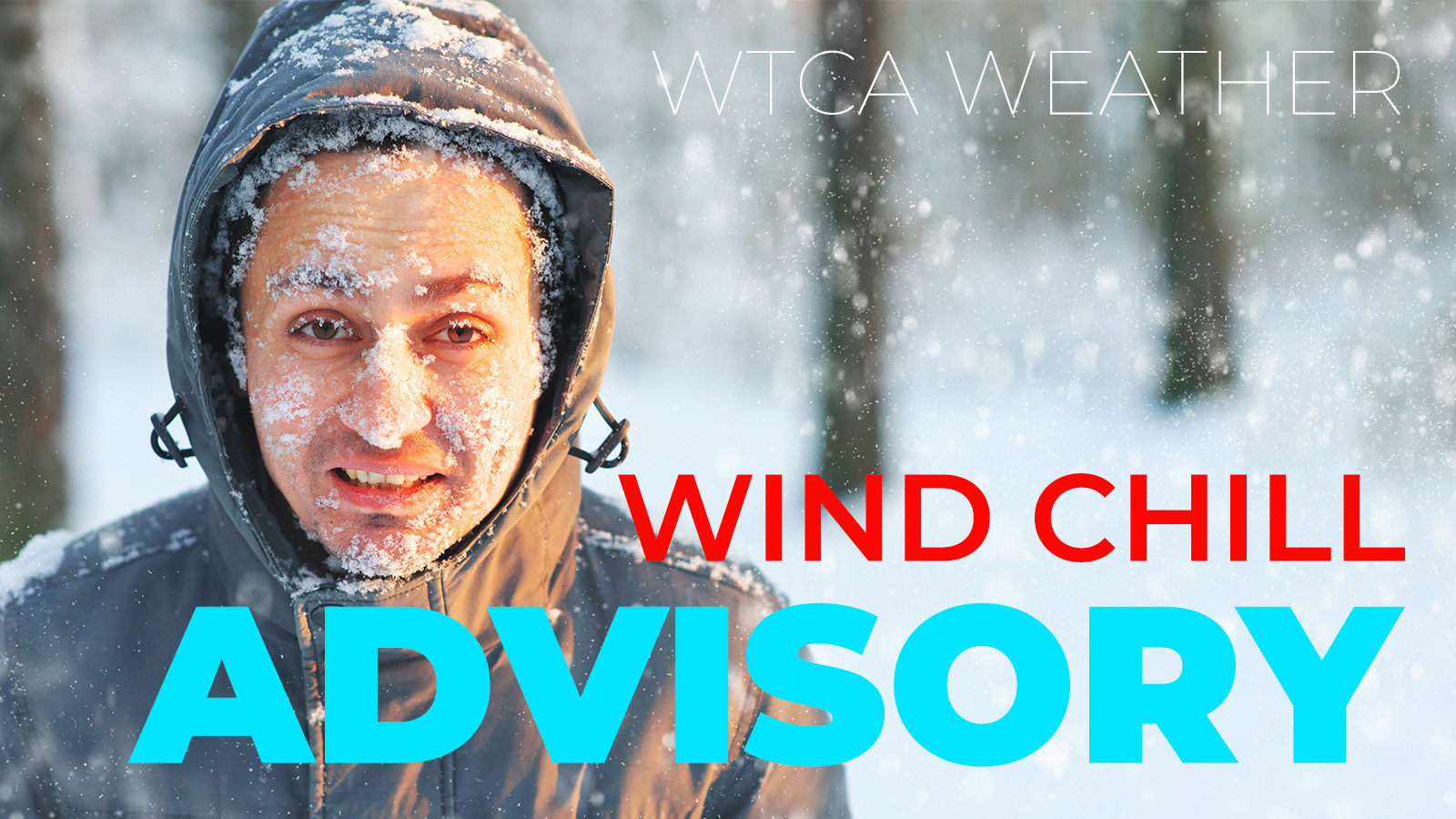The National Weather Service has issued a “Wind Chill” Advisory that goes into effect beginning at 1:00 am Wednesday morning and will remain in place until at least 11:00am Wednesday morning.
Fresh snowpack and clearing skies will result in the coldest air so far this winter. Low temperatures are expected to be near or below zero during the overnight and early morning hours. Winds are expected to be between 5-15 mph which will result in wind chill values as low at 20 degrees below zero.
There is a significant risk of frostbite possible for those who are outside for an extended period, including kids walking to school, or adults who work outdoors. Water lines can be vulnerable at these temperatures and may freeze and burst. Pets and other outdoor animals are also susceptible to frostbite.
Limit time outdoors in these conditions. If you must be outside during extremely cold temperatures, dress appropriately for the conditions. Cover as much skin as possible to minimize exposure and take frequent breaks indoors to warm up. Do not ignore shivering. It’s an important first sign that the body is losing heat.
Know the signs and symptoms of hypothermia and frostbite.
Warnings signs of hypothermia:
• bright red, cold skin
• shivering, exhaustion
• confusion, fumbling hands
• memory loss, slurred speech
• drowsiness
If you notice any of these signs, take the person’s temperature. If it is below 95 degrees, seek medical attention immediately.
If no medical care is available, or not immediately available, begin warming the person:
• Get the victim into a warm room or shelter.
• Remove any wet clothing.
• Warm the center of the body first. Electric blankets or your own body heat can help.
• Warm beverages can help increase the body temperature, but not alcoholic beverages.
• Keep the person dry and wrapped in a warm blanket, including the head and neck.
Frostbite is an injury to the body that is caused by freezing. Frostbite causes a loss of feeling and color in affected areas. It most often affects the nose, ears, cheeks, chin, fingers, or toes. Frostbite can permanently damage the body, and severe cases can lead to amputation. The risk of frostbite is increased in people with reduced blood circulation and among people who are not dressed properly for extremely cold temperatures.
At the first signs of redness or pain in any skin area, get out of the cold or protect any exposed skin. You should also know the symptoms:
• a white or grayish-yellow skin area
• skin that feels unusually firm or waxy
• numbness
You should seek medical attention if conditions to the affected area do not improve.
All pets need adequate shelter from the elements and insulation against cold weather. Pets should not be left outside for long periods in freezing weather. Like humans, they can suffer from hypothermia and frostbite. The young and the senior pets are especially at risk. Pets with arthritis are prone to more discomfort in cold and damp environments.
Indoor accommodations are best during extreme temperature drops, but if that is not possible, set up a suitable house in an area protected from wind, rain, and snow. Insulation, such as straw or blankets will help keep in body heat.
Caution – do not use a heat lamp, space heater, or other device not approved for use with animals. Using these devices could result in burn hazard for your pet and may be a potential fire hazard. Pet-supply vendors sell heated mats for pets to sleep on or to be placed under a doghouse but read and follow directions carefully before use.
Fresh water is always a must. Pets are not able to get enough water from licking ice or eating snow.
Remember cats will seek warmth where they can find it and that may be the warm engine of a car just parked. Before staring your car, knock on the hood or honk the horn to scare off any cats – and prevent a tragedy.
Pipes in attics, crawl spaces and outside walls are all vulnerable to freezing, especially if there are cracks or openings that allow cold, outside air to flow across the pipes. Cracks and holes in outside walls and foundations near water pipes should be sealed with caulking to keep cold wind away from the pipes.
Vulnerable pipes that are accessible should be fitted with insulation sleeves or wrapping (which slows the heat transfer), the more insulation the better.
Kitchen and bathroom cabinets can keep warm inside air from reaching pipes under sinks and in adjacent outside walls. It’s a good idea to keep cabinet doors open during cold spells to let the warm air circulate around the pipes. Electric heating tapes and cables are available to run along pipes to keep the water from freezing. These must be used with extreme caution; follow the manufacturer’s instructions carefully to avoid the risk of fire and check to make sure the product conforms to UL 2049. Tapes and cables with a built-in thermostat will turn heat on when needed. Tapes without a thermostat must be plugged in each time heat is needed and may be forgotten.
A dripping faucet wastes some water, so only pipes vulnerable to freezing (ones that run through an unheated or unprotected space) should be left with the water flowing. The drip can be very slight. Even the slowest drip at normal pressure will provide pressure relief when needed. Where both hot and cold lines serve a spigot, make sure each one contributes to the drip, since both are subjected to freezing. If the dripping stops, leave the faucet(s) open since a pipe may have frozen and will still need pressure relief.
If you would like additional information regarding safety tips during extremely cold temperatures, contact the Marshall County Emergency Management Agency at 574-936-3740.











